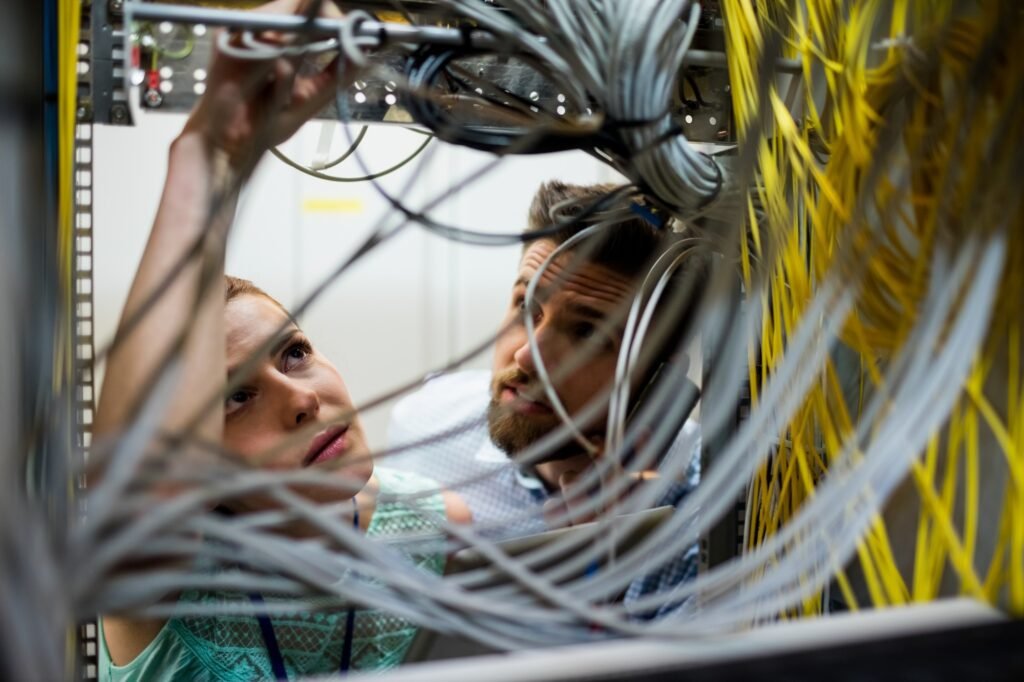Cable Management
Custom Cable Management: Solving Unique Industrial Challenges?
Struggling with cable chaos? Tangled wires causing downtime and safety hazards?
Let’s work it out with Leipole solution.
Custom cable management addresses unique challenges by offering tailored solutions like specialized cable glands, clamps, and routing systems, cable entry plates, improving organization, safety, and efficiency. These systems are adapted to specific industrial needs and environments.
Cable Management over the years, We’ve tackled countless cable management nightmares, from sprawling factory floors to compact control panels. Every situation demands a unique approach. LEIPOLE provides many different cable management production for all of industries . Let’s explore how customization can transform your cable-related headaches into streamlined solutions.

Advanced Diagnostic Technologies in Cable Infrastructure Analysis
Before implementing a custom solution, you need to understand the specific challenges. It’s like diagnosing a patient before prescribing treatment. Think of a sprawling automotive manufacturing plant I once worked with. The sheer scale of the operation, with miles of cabling for robots, conveyors, and control systems, was overwhelming.
- Visual Inspection Augmented by Technology: While a hands-on visual inspection is always the first step, technology can significantly enhance this process. Thermal imaging, for instance, can identify hotspots caused by overloaded or poorly connected cables, even before they lead to failure.
- Cable Tracing and Mapping: In complex systems, simply figuring out where a specific cable goes can be a major undertaking. Specialized cable tracers use signals to identify and map individual cables, even within large bundles. I’ve used these tools countless times to untangle messes that seemed impossible at first glance.
- Data Analysis for Predictive Maintenance: Modern cable management systems can incorporate sensors that monitor various parameters, such as temperature, current, and even strain on the cables.
Adaptive Design:
Modular Cable Management Systems for Diverse Industries
One of the biggest lessons I’ve learned is that flexibility is paramount. Industrial environments are rarely static. Needs change, equipment gets upgraded, and new systems are added. That’s why I’m a strong advocate for modular cable management systems. LEIPOLE, for instance, offers a range of components, from cable glands and clamps to intricate wiring ducts and power distribution blocks, that can be combined and adapted to almost any situation.
- Cable Glands: These aren’t just holes with rubber grommets anymore. Modern cable glands, like those offered by LEIPOLE, provide strain relief, environmental sealing (up to IP67!), and even EMC shielding. I’ve used these in applications ranging from food processing plants (requiring washdown protection) to oil rigs (needing explosion-proof designs).
- Cable Clamps: Simple but essential, clamps secure cables and prevent them from moving or vibrating, which can lead to damage over time. LEIPOLE’s range includes clamps for various cable diameters and mounting configurations.
- Modular Systems: Think of LEGO bricks for cables. Companies like LEIPOLE offer systems where components can be easily added, removed, or rearranged. It is including wiring ducts, support brackets, and labeling systems.
Performance Metrics:
Measuring Custom Solution Effectiveness
How do you know if your custom cable management solution is actually working? It’s not enough to just “eyeball” it and declare it good. You need measurable results. I always insist on establishing clear metrics before implementing any changes.
- Installation Time: A well-designed custom solution should be faster to install than a haphazard collection of off-the-shelf parts. I once worked on a project where a modular cable management system reduced installation time by over 30% compared to the previous, ad-hoc approach.
- Maintenance Time/Costs: This is a big one. A properly organized and labeled cable system makes troubleshooting and repairs significantly easier.
- Safety Incidents: Ultimately, cable management is about safety – preventing electrical shocks, fires, and equipment damage.
Conclusion
Custom cable management is not just about tidiness; it’s a strategic investment that pays dividends in safety, efficiency, and reliability. By understanding the unique challenges of each industrial setting and implementing tailored solutions, we can transform cable chaos into a well-ordered and high-performing system.
